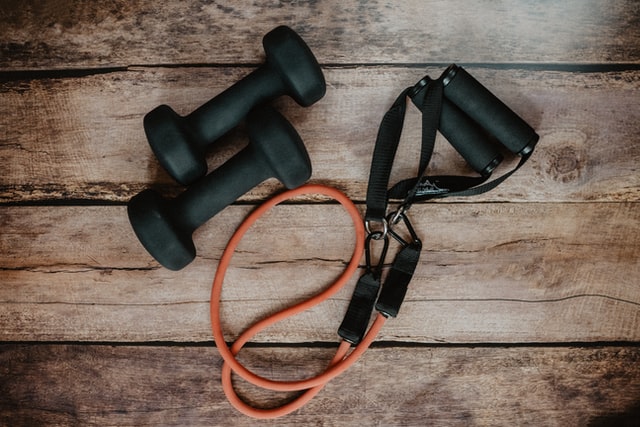Working Out While Sick: Good or Bad?

Sometimes, you want to skip a workout because you’re tired or feeling unmotivated. On those days, you often give yourself a pep talk, and then go get your exercise session in. But what about days when you’re truly sick? While exercise is a great way to keep your health in top condition, everyone gets sick sometimes.
If you’re worried that taking a rest day might turn into a rest week (or longer), you might be wondering when it’s okay to work out while you’re sick – or even what the best workout is to help you feel like yourself again. Find out here if it’s okay to grab your gym bag and go, or if you’re better off taking some time to rest and recover.
How do you know if you’re okay to keep working out?
When you’re feeling under the weather, you want nothing more than to get back to normal. That said, jumping full force into your normal workout routine might put unnecessary stress on your body that could make it harder to recover.
For those who want to know if it’s okay to work out while you’re sick, the “above the neck” rule – which covers any illness limited to above your neck – is a reliable rule. If your symptoms are all above the neck, including a stuffy nose or mild cold, you’re likely fine to keep exercising if you want to. Of course, stick to a mild intensity and shorten your typical workout length, but there’s no reason to forego exercise altogether.
However, if your symptoms reside throughout your body, like a fever or stomachache, it’s best to wait until you’re feeling better to resume exercising.
If you’re ill with one of these, you’re probably okay to continue exercising
Checking with your doctor is the best way to make sure, but typically, you can continue a mild workout routine with the following symptoms:
A light cold: If you have mild cold symptoms like sneezing, congestion, a light cough or a headache, you can most likely still exercise. Trade any vigorous routines for gentler ones, like a walk outside. Also, in consideration of COVID-19, it’s important to maintain social distancing just in case. Practice proper sanitization of any equipment you touch and wash your hands frequently to avoid the potential spread of germs.
Earache: For adults, ear pain is commonly the result of pain in another area (like a sore throat). Sometimes, an earache can interfere with your balance or cause a fever – if yours is of this severity, avoid working out until you’re better. If your earache is just causing minor discomfort or pressure in your head, light exercises that don’t agitate the sinus region are fine to engage in.
Mild congestion: It’s uncomfortable, for sure, but nasal congestion doesn’t necessarily have to pump the brakes on your exercise regimen. The exception is if it’s accompanied by a fever, a productive, phlegm-producing cough, or other more serious symptoms. Otherwise, a little bit of exercise might even clear your nasal passages and help you breathe easier.
Mild sore throat: A sore throat combined with a fever or trouble swallowing is one thing, but a sore throat as a result of allergies or the common cold doesn’t have to stop you from getting your exercise in. As with the other symptoms, lower the intensity and duration of your workout, and ensure you’re hydrated, and you should be good to go.
Pass on the workout if you’re sick with these
Some symptoms are too severe or dangerous to continue exercising with. If you have any of these, your best bet is to stay home and wait until they’ve subsided before attempting to work out again.
Fever: A fever is when your body temperature rises above its normal range of 98.6°F. Often, it will make you feel body aches, fatigue, a loss of appetite and other uncomfortable symptoms. Working out under these conditions or exercising while sore can make things worse, leading to dehydration and more. Because fevers cause a decrease in strength and coordination, your risk of injury is also greater.
Productive or active cough: Sure, you can work out with a cold, but frequent coughing could be signs of something more serious than the common cold, like the flu or pneumonia. Among other impairments, it can make it harder to take a deep breath, especially as your heart rate increases during a workout. This could make it easier to lose your breath and become fatigued. It’s also worth noting that coughing is one of the main ways that viruses spread, so when you work out with an active cough, you’re putting others around you at risk of infection – so it’s safest to stay home.
Stomach bug or flu-like symptoms
When your digestive system isn’t doing its best, or you have symptoms like chills or muscle aches, working out can be really uncomfortable, or potentially dangerous. Not only are these illnesses highly contagious, they also put you at risk of dehydration and general weakness. If you’re feeling anxious as you recover and you’re eager to get moving again, take it easy with some light stretching at home and wait until you feel better to venture out again.
Returning to the gym after an illness
Most importantly, don’t rush back into the gym. Giving your body the time it needs to make a full recovery is important. You might consider starting with some home workouts as you find your pace again.
Even as you settle back into your normal exercise routine, take things slow and gradually work your way back up to your typical activity level. And remember: If you’re ever unsure about whether or not you’re ready to begin working out again during or following an illness, talking to your doctor can help you get specific answers for your situation.
